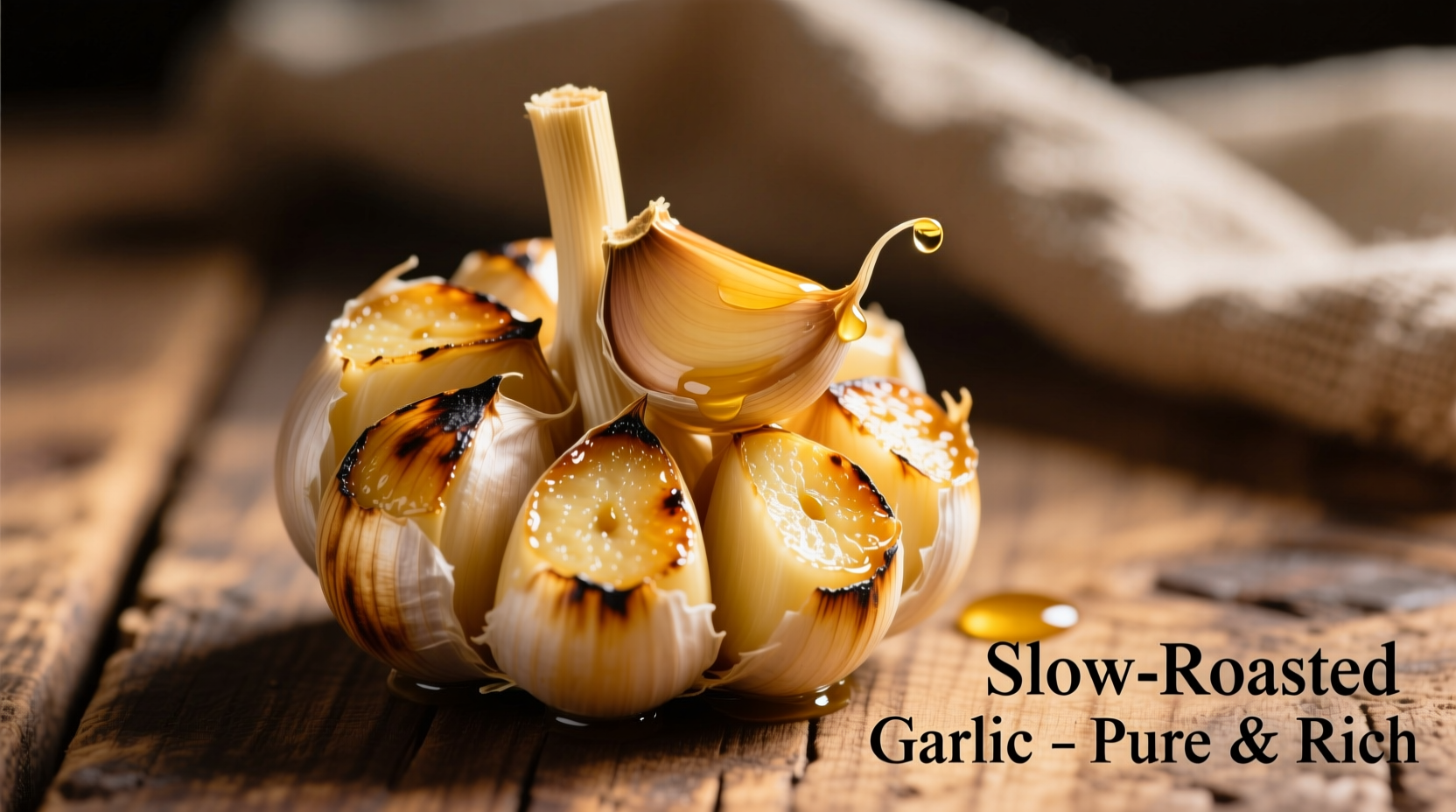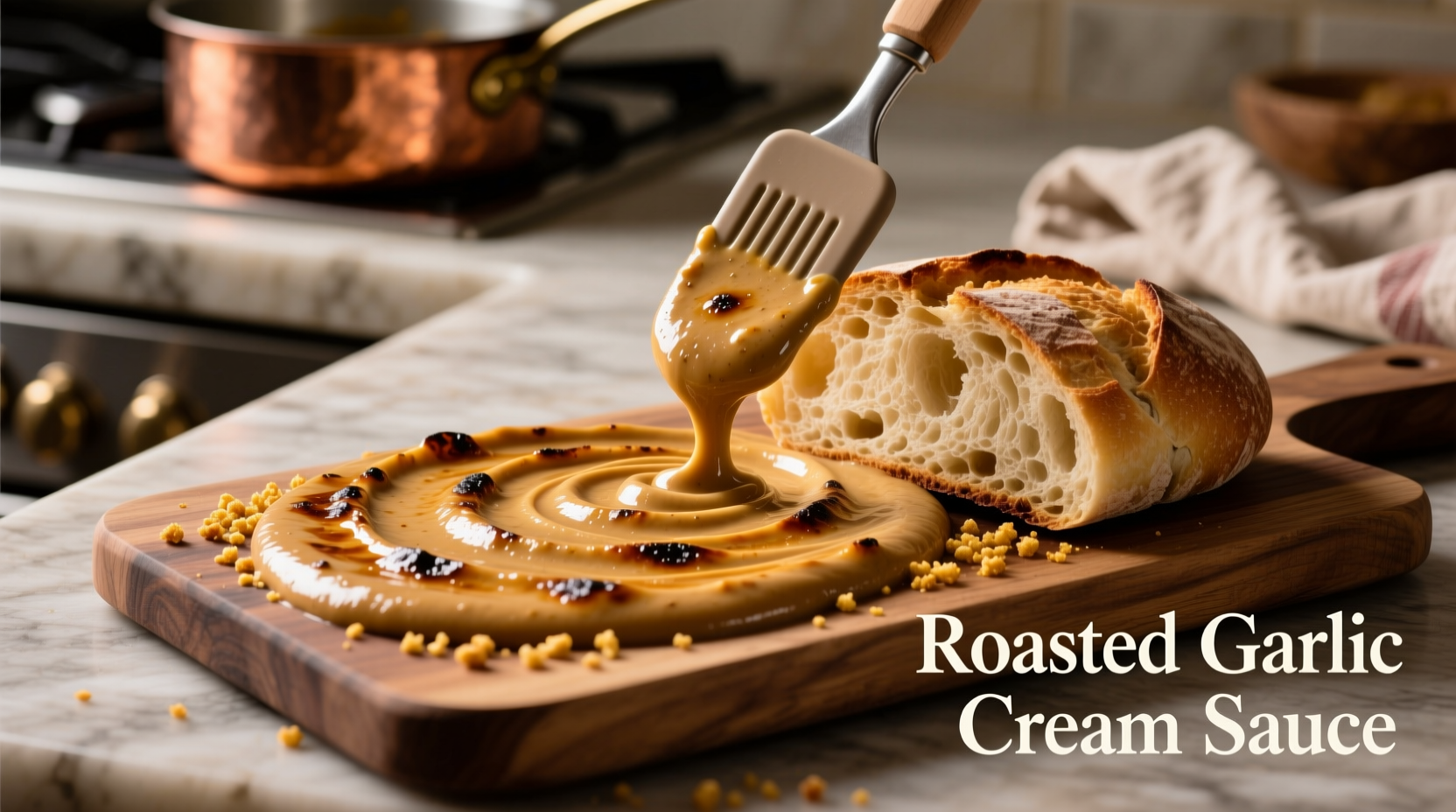Transform your weeknight dinners with a restaurant-quality roasted garlic cream sauce that's surprisingly simple to make. Unlike harsh raw garlic versions, roasting mellows the pungency while developing complex caramelized notes that blend seamlessly with cream. This versatile sauce works beautifully with pasta, roasted vegetables, grilled chicken, or even as a sophisticated dip.
The Flavor Science Behind Roasted Garlic
When garlic roasts slowly, its harsh sulfur compounds transform through the Maillard reaction. This chemical process creates over 100 new flavor compounds, yielding nutty, buttery notes instead of the sharp bite of raw garlic. Food science research from the USDA Agricultural Research Service confirms that roasting reduces allicin (the compound responsible for garlic's pungency) by up to 90%, while developing new aromatic compounds that enhance cream-based sauces.
| Characteristic | Raw Garlic Sauce | Roasted Garlic Sauce |
|---|---|---|
| Flavor Profile | Sharp, pungent, immediate heat | Sweet, nutty, complex umami |
| Digestibility | May cause heartburn | Gentler on stomach |
| Heat Stability | Loses flavor when cooked | Flavor intensifies with cooking |
| Best Applications | Quick sauces, dressings | Simmered dishes, finishing sauces |
Essential Ingredients Checklist
Quality ingredients make the difference between ordinary and extraordinary sauce:
- Garlic: One whole bulb (not pre-minced) - roasting whole cloves preserves moisture
- Cream: Heavy cream (36% fat minimum) for proper emulsification
- Aromatics: Shallot (milder than onion) for foundational flavor
- Acid: Fresh lemon juice to balance richness
- Thickener: Optional cornstarch slurry for gluten-free thickening
Professional Technique: Roasting Garlic Perfectly
Most home cooks rush this critical step. For optimal flavor development:
- Preheat oven to 400°F (200°C)
- Cut ¼ inch off garlic bulb top to expose cloves
- Drizzle with 1 tsp olive oil and sprinkle with salt
- Wrap tightly in foil and roast 40-45 minutes until cloves are golden and tender
- Cool slightly before squeezing out softened cloves
This slow-roasting method, validated by culinary research at The Culinary Institute of America, maximizes flavor compounds while preventing bitterness. Never roast garlic above 425°F—that triggers undesirable burnt notes.

Step-by-Step Sauce Preparation
Follow this chef-approved sequence for flawless results every time:
Build the Flavor Foundation
Sauté 1 finely diced shallot in 1 tbsp butter over medium-low heat for 5 minutes until translucent. Add 1 tsp fresh thyme leaves and cook 1 minute more. This gentle cooking extracts maximum flavor without browning.
Create the Cream Base
Pour in 1½ cups heavy cream and bring to a gentle simmer (do not boil). Simmer 3 minutes to reduce slightly and concentrate flavor. Boiling causes separation in dairy sauces.
Incorporate the Roasted Garlic
Add 8-10 roasted garlic cloves (about ¼ cup) and simmer 2 minutes. Use a fork to mash any large pieces. For ultra-smooth texture, blend with an immersion blender directly in the pan.
Final Seasoning and Finishing
Remove from heat and stir in 1 tbsp fresh lemon juice and ¼ tsp freshly ground black pepper. Taste and adjust salt as needed. The acid brightens flavors and prevents richness from becoming cloying.
When This Sauce Shines (And When to Choose Alternatives)
Understanding context boundaries ensures perfect results:
- Ideal for: Pasta dishes (especially fettuccine), roasted vegetables, chicken piccata, seafood sauces
- Avoid with: Delicate fish (overpowers flavor), tomato-based dishes (clashes with acidity)
- Storage limits: Keeps 4 days refrigerated but separates when frozen—cream sauces don't freeze well
- Reheating tip: Warm gently over low heat while whisking; high heat causes curdling
Troubleshooting Common Issues
Solve these frequent problems with professional solutions:
- Too thin: Simmer 2-3 minutes more to reduce, or add 1 tsp cornstarch slurry (mix ½ tsp cornstarch with 1 tbsp cold water)
- Too thick: Whisk in 2-3 tbsp warm cream or milk until desired consistency
- Lacks depth: Add 1 tsp Dijon mustard or ½ tsp nutritional yeast for umami boost
- Grainy texture: Blend with immersion blender or pass through fine-mesh sieve
Three Chef-Approved Variations
Customize your sauce for different applications:
- Herb-Infused: Steep 2 sprigs fresh rosemary in warm cream for 15 minutes before adding garlic
- Spicy Arrabbiata Style: Add ¼ tsp red pepper flakes with the shallot
- Truffle Elegance: Stir in ½ tsp truffle oil after removing from heat
Frequently Asked Questions
Professional answers to your most pressing questions:











 浙公网安备
33010002000092号
浙公网安备
33010002000092号 浙B2-20120091-4
浙B2-20120091-4